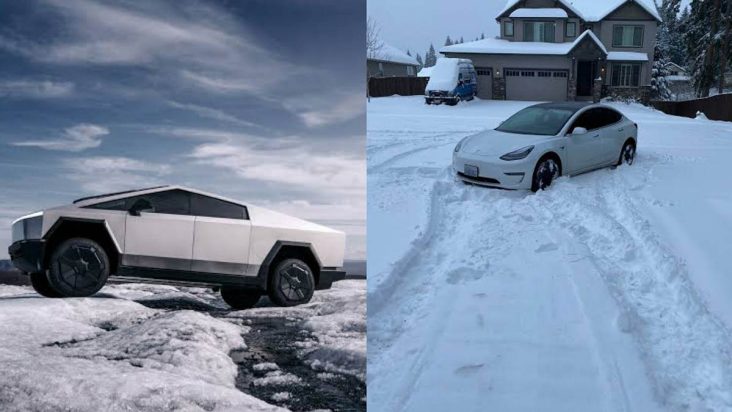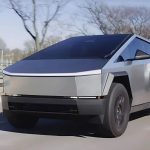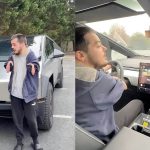If you’re wondering how Tesla vehicles perform in snowy conditions, this report is for you. However, there’s more to the story than just snow—Tesla owners have shared their real-world experiences, and the results might surprise you.
Tesla Model Y: A Snow-Driving Champion?
While researching Tesla Model Y experiences, I came across a Facebook post from Rob Lippke, who claims his Model Y is a fantastic snow vehicle. He shared his experience of driving through deep snow, proving that Teslas can handle harsh winter conditions.
“I was delivering groceries to an apartment building’s unplowed parking lot, and there was over a foot of new snow. I was pushing snow with my bumper, and my Tesla Model Y took it like a champ.”
A quick look at the image he posted confirms there was indeed a lot of snow, yet the Model Y plowed right through it—something that might surprise those who doubt EVs in winter conditions.
Tesla Model X in the Snow: A Veteran’s Perspective
Tesla owners are increasingly proving that EVs handle winter driving exceptionally well. A Model X owner, Selena, who has been driving Tesla vehicles for four winters, shared her experience:
“Heading into the fourth winter with a Tesla, I wouldn’t trade it for anything. I still get people who say it must be bad in the snow, hard to charge, etc.”
She explained why she prefers Tesla in cold weather:
- “They heat up faster than any gas car, and I always feel extra safe driving it.”
- “I don’t have to go out of my way to pump gas in sub-zero temps; I just drive home and plug in.”
- “Honestly, driving something other than a Tesla is a huge pain in the derriere and not nearly as easy and fun.”
More Tesla Owners Share Their Winter Experiences
Jeff Miller, another Tesla driver, echoed similar sentiments:
“It’s the best vehicle with four wheels in the winter that I’ve ever driven. I live in Minnesota and get out to the Rocky Mountains quite often. Nothing comes close to my Model X with winter tires on it. Eight inches of snow is zero problem! I was blasting through that like I was on a snowmobile on a groomed trail!”
This proves that with the right tires and preparation, Tesla vehicles can handle deep snow as well as—or better than—many traditional SUVs.
Winter Driving: More Than Just Snow
Driving an EV in the cold isn’t just about traction in snow—it also involves battery efficiency and range loss. A Tesla Motors Club user, Ray from Minnesota, shared his experience with his 2016 Model X:
“You will lose range with the cold ambient temperatures, so plan accordingly—both from the cabin heater and from keeping the pack at optimal temps.”
How Much Range Does a Tesla Lose in Cold Weather?
A study from Automotive News cites research from Recurrent, an EV battery and range analytics company, showing that EVs lose about 20% of their range in freezing temperatures.
Among the vehicles tested, Tesla performed the best:
- Tesla Model X retained 89% of its range
- Tesla Model S retained 88%
- Tesla Model 3 retained 87%
- Tesla Model Y retained 86%
For comparison, the Volkswagen ID.4 performed the worst, retaining only 63% of its range in the cold.
Charging Challenges in the Cold
Another common concern is charging an EV in freezing temperatures. Andrew Garberson, head of research at Recurrent, explained:
“EV batteries can’t accept a charge when they’re too cold, which sometimes makes for longer charging times.”
To address this, Tesla and other EV manufacturers now include battery preconditioning features, which allow the car to warm the battery before reaching a charging station for faster and more efficient charging.
How Cold Weather Affects All Vehicles (Not Just EVs)
It’s important to note that cold weather affects all types of vehicles, not just EVs. According to a PBS report:
- Gasoline engines also lose efficiency in cold weather.
- Traditional car batteries struggle in freezing temperatures.
- Cold temperatures slow down the chemical reactions in all batteries, whether in a gas car or an EV.
Tips for Driving an EV in Cold Weather
If you own (or are considering) a Tesla in a cold climate, here are some expert tips for managing range and performance in winter:
- Plan ahead: Expect a 20% reduction in range and adjust trip planning accordingly.
- Preheat your Tesla before driving: This helps maximize range and comfort.
- Use seat warmers instead of full cabin heating: This saves battery power while keeping you warm.
- Charge in warmer areas: If possible, charge your Tesla indoors or in a garage to keep the battery at optimal temperature.
Should You Buy a Tesla for Snowy Climates?
The real-world experiences of Tesla owners suggest that EVs perform exceptionally well in the snow—especially Tesla vehicles with their advanced traction control, heat pumps, and winter tires.
“Now, more than ever, it’s clear that these cars (EVs) do just fine in the winter.” — Andrew Garberson
So, if you’re hesitating to buy a Tesla because of winter concerns, you might want to reconsider. Tesla vehicles not only handle snow well but also offer a warm and convenient driving experience—without gas station stops in freezing weather.



